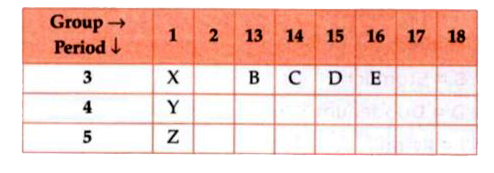The mass of positively charged particles present in an atom is found to be 11,022 times that of an electron. Identify the element and write its electronic configuration.
To solve the problem, we need to identify the element based on the given information about the mass of the positively charged particles (protons) in relation to electrons.
Step 1: Understanding the Mass Ratio
The problem states that the mass of the positively charged particles (which we know are protons) is 11,022 times that of an electron.
Step 2: Determine the Number of Protons
Since the mass of a proton is approximately 1837 times that of an electron, we can use this information to find the number of protons in the atom.
Let:
- Mass of an electron = 1 unit
- Mass of a proton = 1837 units
Given that the mass of the positively charged particles is 11,022 times that of an electron, we can set up the equation:
Mass of protons=Number of protons×Mass of one proton
Let n be the number of protons:
n×1837=11022
Step 3: Solve for the Number of Protons
Now, we can solve for n:
n=110221837≈6
This means that the element has 6 protons.
Step 4: Identify the Element
The atomic number of an element is equal to the number of protons. An element with 6 protons is Carbon (C).
Step 5: Write the Electronic Configuration
The electronic configuration of Carbon (atomic number 6) is:
1s22s22p2
Final Answer
The element is Carbon (C), and its electronic configuration is 1s22s22p2.
---
The problem states that the mass of the positively charged particles (which we know are protons) is 11,022 times that of an electron.
Since the mass of a proton is approximately 1837 times that of an electron, we can use this information to find the number of protons in the atom.
- Mass of an electron = 1 unit
- Mass of a proton = 1837 units
Now, we can solve for n:
The atomic number of an element is equal to the number of protons. An element with 6 protons is Carbon (C).
The electronic configuration of Carbon (atomic number 6) is:
The element is Carbon (C), and its electronic configuration is 1s22s22p2.
Similar Questions
Knowledge Check
Mass of total positive charge present in an atom is 55110 times to that of mass of electron . Write the electronic configuration of the element.
A2, 8, 9, 2B2, 8, 18, 1C2, 8, 18,2D2, 8, 8,2
Write electronic configuration of element E.A2,8,3B2,8,6C2,8,5D2,8Mass of total positive charge present in an atom is 55110 times to that of mass of electron . Write the electronic configuration of the element.
A2, 8 , 9 , 2B2 , 8 , 18 , 1C2, 8 , 18 , 2D2 , 8 , 8 2
The atomic number of an element is 25.
Write its electronic configuration.
View SolutionMass of total positive charge present in an atom is 16533 times to that of mass of electron. Find the atomic number of an element.
View SolutionThe atom of an element has 9 protons, 9 electrons and 10 neutrons.
Name the element and give its electronic configuration.
View SolutionWrite electronic configuration of some elements.
View SolutionAn element with atomic number 64 will have the electronic configuration
View Solution